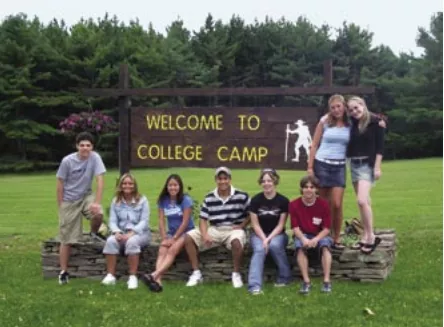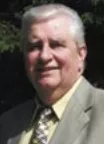Nature has taken more care than the fondest parent for the education and refinement of her children. Consider the silent influence which flowers exert, no less upon the ditcher in the meadow than the lady in the bower. When I walk in the woods, I am reminded that a wise purveyor has been there before me; my most delicate experience is typified there. –Henry David Thoreau (1817–1862)
SUNY Oneonta Revives a Half-Century Old Recreational Learning Facility by Tom Ryder
This is the story of the College Camp at SUNY Oneonta – a wonderful 280-acre outdoor education and recreation facility that was closed for eight years due to a lack of funding. Sale of the property was being considered until a dedicated group of individuals found a great solution and “rescued” the Camp. Now, five years after reopening, the Camp and its programs are thriving. It’s a great story with a happy ending.
Over 50 years ago, the College’s auxiliary service, then called the Faculty Student Association (FSA), purchased a beautiful tract of former farmland within a mile of campus. The plan was to develop a facility that would provide a different and exciting perspective to what at that time was a state teachers college.
The Camp property at the top of a hill has a wide variety of deciduous and evergreen trees. Two small ponds are home to fish, frogs, and salamanders, and a small stream runs downhill through the property. Colorful blue jays, cardinals, and orioles flit through the trees. The white-tailed deer, fox, and smaller mammals thrive in this protected area, and occasionally a black bear is seen. The Camp is a treasure trove of flora and fauna.
The plan was to develop a facility that would provide a different and exciting perspective…
The first activities were field trips, overnight camping, and hiking. In the 1960s, the FSA Board authorized construction of a small cabin and a wonderful two-level, 2,500 square foot lodge, so faculty, staff, and students had an indoor location at the Camp for meetings, classes, and social events. The board hired the first caretaker. College Camp was designated as a primary field site for the science departments. Records from 1965 indicate that Camp facilities were used extensively with total registrations exceeding 5,000 for the year.
SUNY Oneonta’s 250-acre campus overlooks the scenic Susquehanna River Valley in central New York about halfway between Albany and Binghamton. On nearby Otsego Lake in Cooperstown, the College maintains a complex which houses its Biological Field Station and Graduate Program in History Museum Studies. Founded in 1889, the College at Oneonta became a charter member of the State University system in 1948. Today, the College enrolls more than 5,800 students in 69 undergraduate majors and nine graduate programs. A liberal arts college with a pre-professional focus, the SUNY Oneonta is noted for an outstanding and accessible faculty, students committed to both academic achievement and community service, excellent facilities and technology, a beautiful campus with a modern field house, and an exceptional library with the most volumes per student of the SUNY colleges of arts and sciences.
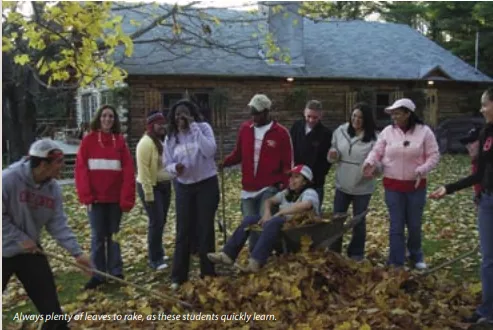
FSA tried something new in the 1970s – downhill skiing. Beautiful in the summer, the Camp is a true winter wonderland when that long season rolls around in upstate New York. Several small ski slopes were developed, complete with a T-bar lift, snow-making equipment, and a very modest ski lodge. Skiing was quite popular with students and the local community for many years. Eventually, cost, mild winters, and development of larger ski centers caught up with the operation, and downhill skiing was stopped in 1984.
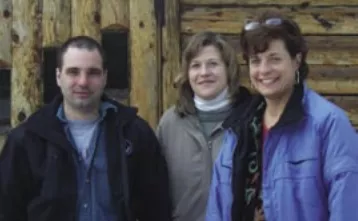
Administrative Team: (L-R) Tim Gargash, Caretaker; Tracey Lindberg, Executive Assistant; Colleen Brannam, Marketing & Publications Manager.
However, those involved with the Camp had worked to expand it in other ways:
- College students, many of whom hail from more urban areas of the state, enjoyed the outdoor activities, freedom of being away from campus, and social events held at the lodge. Eager student groups competed for reservations to use the lodge on weekends through a lottery system.
- Outdoor concerts were held on the property.
- Staff and volunteers continued development of the seven-mile marked trail system, later introducing a fitness trail that featured exercise stations at various points.
- Winter use increased with grooming of cross-country ski trails and snowshoeing.
- Educational programs expanded the use of outdoor areas of the Camp.
- The lodge was used frequently for weddings and other family events.
- Local not-for-profit groups, such as the Boy and Girl Scouts, were invited to use the facilities.
In 1987, the College’s Observatory moved to an open area of the Camp to avoid the light pollution from the City of Oneonta and another nearby college. Two large telescopes, one with a 16-inch lens and the other a 14-inch lens, are housed in structures next to a modular classroom, and seven 4-inch lens telescopes are located in sheds with removable roofs. The observatory added another dimension to the Camp and provided great opportunities for public events, advanced viewing, and digital imaging of planets, star clusters, and nebulae.
The late 1980s and early 1990s were difficult years for the College and the Camp. As enrollment declined, the auxiliary area was impacted heavily. Decreased enrollment resulted in a drop in the three auxiliary revenue centers: dining, bookstore, and vending. With a full-time caretaker/program director on the payroll along with maintenance and programming, the Camp’s annual costs were $75,000 with little or no revenue beyond a few modest fees.
In 1992, the Board of Directors of Oneonta Auxiliary Services (OAS, the not-for-profit corporation under contract with the College, which succeeded the Faculty Student Association) faced a difficult choice: closing the Camp or increasing dining rates substantially to keep it open. The Camp was closed, and over the next seven years, repeated attempts to reopen it failed because of the lack of funding.
Since the Camp still cost OAS $30,000 a year for heat, taxes, and other maintenance, the question soon became, “Can we find a way to reopen the Camp, or should we sell it?” Many were shocked at the thought of selling the facility, but that alternative had become a reality.
The Camp, a tradition of the College, was remembered fondly by alumni, some of whom were married there. Many faculty, who had used the facility so successfully, mourned its closing, and students for nearly a decade during the 1990s missed out on the memorable and unique experiences of the Camp.
Late in 1999, the OAS Board charged a new committee with resolving the issue of reopening. Meeting regularly, the members reviewed the budget, developed estimated costs, looked for revenue opportunities, and studied the work of prior committees. The dedicated group knew this could be the last chance for the Camp. The Committee’s recommendation to the board was that the Camp could be reopened successfully subject to the following conditions, based on estimated opening costs of $135,000 with an annual budget of $90,000:
- Significant financial support from the Student Association would be required.
- OAS would have to sell about 70 acres of additional land that was purchased in 1989 but never developed for Camp programs.
- Both OAS and the College would have to contribute.
Next, the Committee began an educational and informational campaign across campus, including presentations to the Student Association, the President’s Cabinet, and a number of administrative and staff groups. These presentations were made by Dr. Steven Perry, Vice President for Student Development. “I was convinced from my experience at the camp (prior to its close) that it held incredible potential to enhance the quality of student life and learning. I believe we needed to make the necessary financial commitment to preserve an irreplaceable asset for the College.”
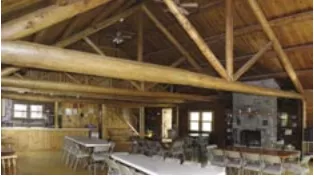
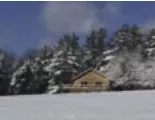
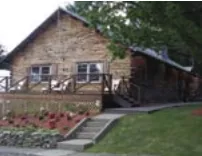
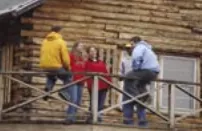
In addition, the Executive Director of OAS, Tom Ryder, along with former Camp caretaker/program director Snapper Petta, took groups of students to the Camp in vans to show them the facility and talk about the opportunities it could provide. Few of these students had ever seen the Camp, but they were very impressed and excited. Snapper recalls, “What I remember most is the look on everyone’s face. Once they saw the lodge, even it its rough form, they could envision the possibilities for programming, socials, and other gatherings. Each wanted us to reopen quickly so they could reserve the facility for themselves.”
Ultimately, it was the students’ enthusiasm that made the re-opening possible. Within three months, the committee presented its unique plan:
- The Student Association agreed to pay OAS $30,000 annually for three years, with an additional $30,000 to help with initial opening costs.
- OAS sold its excess property for $70,000 and used the proceeds to renovate the lodge.
- The College released a portion of Snapper Petta’s time to serve as the Camp’s program director. His experience with the Camp and his position in residence life as Director of the Outdoor Resources Center made him an ideal fit. An account for program supplies and materials, along with Snapper’s time, equaled a $30,000 contribution by the College.
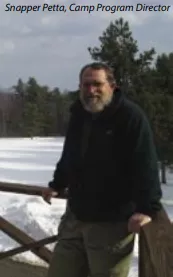
- OAS made up the difference in opening costs and used the $30,000 already budgeted annually for the Camp.
The OAS Board of Directors approved re-opening the Camp in fall 2000.
OAS then went to work bringing the long unused grounds and buildings back online, facing some major challenges:
- A severe tornado, very rare in New York State, had ripped across the countryside in May 1999, with the Camp in its path. Fortunately, there was no loss of life in the area, but the downed trees created significant obstructions and hazards. The cost of clearing trees to make the Camp safe for use was $25,000.
- The long-unused lodge needed substantial work, including correction of drainage problems to stop water from running through the lower level. Bringing the lodge up to code, installing a new kitchen, and adding an accessible bathroom cost $80,000.
- The 1.5-mile dirt road leading to the Camp needed new material and grading for about $17,000.
- Expenses such as new furnaces for the lodge and caretaker’s cabin, a handicapped/service entrance and ramp, and other repairs amounted to approximately $135,000 in total opening costs.
Just before the fall 2000 semester, the College celebrated the reopening of the Camp with a ribbon cutting. The Camp once again offered opportunities for outdoor activities such as hiking, trail biking, snow shoeing, cross-country skiing, and more. Outdoor programs, including an expanded challenge course, were re-established. Beginning in spring 2001, efforts turned to the lodge. After three months of work, including volunteer efforts by staff and students, the lodge hosted an open house. T-shirts commemorating the reopening read, “College Camp, a cooperative venture of the Student Association, the College at Oneonta, and Oneonta Auxiliary Services.” The phrase “cooperative venture” embodies the spirit of the efforts that rescued the Camp, and those who made it happen were proud of their accomplishment.
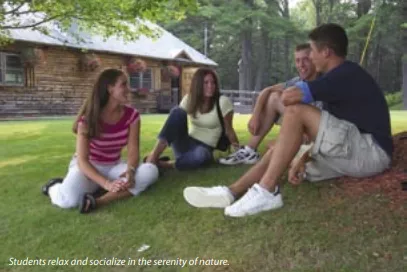
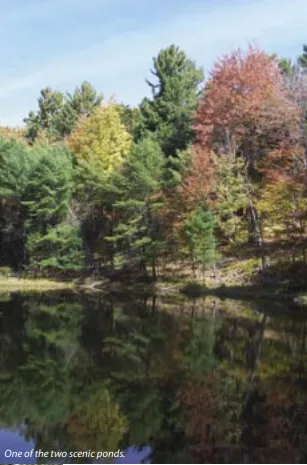
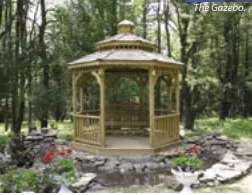
The opening of the lodge signaled a time of incredible growth in activity at the Camp. Consider this sample of what happened in the five years subsequent to opening:
- A reservation system was established, and events are scheduled at the lodge an average of five days per week year-round. In addition to classes, seminars, retreats, student club meetings, and general social activities, the lodge hosts, on average, four weddings a year. Almost 9,000 individuals were involved in reservations during 2003-04, a 15 percent increase over the previous year.
- The caretaker’s estimate of people on the grounds who are not involved in lodge reservations adds another 8,000 individuals who used the Camp for outdoor recreation, a 28 percent increase over the prior year. Between the two counts, the total annual usage amounts to 17,000.
- For the fourth successive year, new students and parents attending summer orientation (about 300 people in each of seven sessions) will visit the Camp for a barbeque under a big tent next to the lodge. This event gives new students exposure to the facility and has greatly increased participation at the Camp in subsequent activities.
- A Camp Advisory Committee of faculty, students and staff provides input for new activities and facilities, reviews proposals, and is directly involved in Camp functions.
- Increased programming includes more frequent use of the challenge course and annual events including Winterfest, a Yuletide Festival, and a Native American Festival.
- Educational activity in the observatory has increased and includes monthly programs for community members to use the telescopes.
- The Camp provides additional opportunities for our food service to cater events.
- Marketing of the Camp at Admissions open houses and across campus has grown substantially.
- New facilities built since the re-opening include a full basketball court, a sand volleyball court, a covered picnic pavilion, and a beautiful gazebo.
- Students will work on an arboretum this spring, complete with plaques that identify the species of trees.
- A five-year capital plan to expand activities and provide maintenance for the Camp is in place.
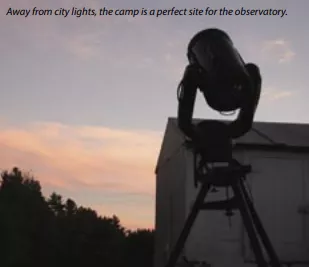
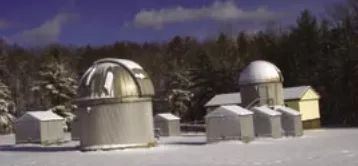
The opening of the lodge signaled a time of incredible growth in activity at the Camp.
- The College at Oneonta Foundation is considering a special campaign to establish an endowment for the Camp.
- The new caretaker, Tim Gargash, has lots of energy and good ideas. He will work this summer to prepare a skating area for next winter and to introduce some beehives with a unique cut-away viewing station for observers.
- The administrative team of Tim, Colleen Brannan (Marketing), and Tracey Lindberg (Executive Assistant) strives to keep the customers happy and smiling.
As promised, the story of the College Camp has a happy ending. Faced with the loss of a great place and a 50-year tradition, students, faculty, and staff pulled together to rescue a College Camp that has now been reestablished as a unique component of the College at Oneonta experience.
